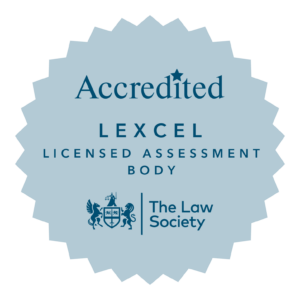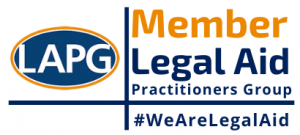Dawn Wilson of Creighton and Partners recently acted for the mother in this reported case which concerned the use of hair strand testing in family cases.
Background
Care proceedings were issued by the London Borough of Barnet in January 2017, immediately following Holly’s birth. Holly is the mother’s fourth child, her previous three children being subject to care proceeding in 2011, 2012 and 2015. Her oldest child currently resides with the maternal grandmother under the auspices of a special guardianship order and her middle two children have been placed together for adoption.
The Local Authority commenced care proceedings due to concerns regarding the mother’s long-standing history of drug abuse and her history of entering into abusive relationships. During previous proceedings, in relation to her middle children, the mother underwent extensive hair strand testing which produced positive results for the presence of cocaine and its metabolite benzoylecgonine (BE) at low or very low levels. The testing covered a period where the mother admitted drug use and a period where she claimed she was abstinent from all drugs. The mother was adamant that she had not taken drugs since July 2015.
The mother became pregnant with Holly in or around April 2016. During her pregnancy the mother made many practical arrangements for Holly’s arrival. She was fully cooperative with the health services and the local authority. She was also attending drug support services and groups, the feedback from which was very positive.
In December 2016 a urine drug screening test was negative however a hair strand test, covering the period of April 2016-November 2016, that was conducted two days after the urine testing showed the presence of cocaine and BE at a low or very low level. A visit conducted by the social worker at the same time found the house to be clean and the mother looked well and healthy. The social worker had no reason to believe that the mother was under the influence of any drugs.
Four days after Holly was born, in January, an interim care order was made and she was placed in foster care. This was due to the previous drug test results and the local authority’s concerns that Holly was at imminent risk of harm. A further hair strand test was conducted in February 2017, covering the period from March 2016-January 2017. This was undertaken by a different laboratory from the previous tests, who reported the presence of cocaine and BE at a medium to low level throughout. Even though the testing period was theoretically the same as the test undertaken in December 2016 the levels reported were significantly higher.
In March 2017 the case returned to court and it was ordered that Holly should be returned to her mother’s care under an interim supervision order and that due to the conflicting hair strand test results put before the court, the matter should be transferred to the High Court to deal with the issue of the validity of the drug testing.
The mother and Holly initially lived with a family friend, under very close supervision, and in July 2017 moved back into the mother’s own accommodation. During this time the mother was frequently seen by many professionals. This included a family support work (FSW) twice daily, another FSW three times a week, the social worker at least twice a week and her drug support worker three times a week for random drug/urine testing. In a 24-week period (March -July) the mother undertook 57 random drug/urine tests and all were negative. None of the professionals raised concerns around the mother’s presentation nor did they suspect she was under the influence of any drugs.
The court ordered a further hair stand test, this time with all three testing organisations who had previously undertaken testing taking their samples on the same day, at the same time. This would allow direct comparison between the three processes. The results showed the presence of very small amounts of cocaine and low levels of BE. The mother denied any drug use in 2017.
The Hearing
The three hair strand testing organisations were invited to become interveners to the proceedings.
Before the hearing a professionals meeting and advocates meeting took place in which the experts agreed twelve facts that were standard across the board. These are set out in judgment.
However, there were some areas of disagreement that the Judge was asked to consider: –
(1) Significance of the variability of the results provided
The Judge found that the variability of findings from the hair strand testing does not call into question the underlying science but does highlight the need to treat any numerical data with caution. There will inevitably be a margin of variability with this kind of testing but the Judge found that the testing organisations approached their tasks conscientiously.
(2) The nature and significance of industry set guidelines
All the testing organisations use the main guidelines provided by the Society of Hair Testing (SoHT). The Judge found that these are the current industry standard and it is not appropriate to require compliance with a higher set of standards.
(3) Significance of the findings of cocaine and its metabolites below the cut off
Having considered all of the evidence but before him, the Judge found that it would be artificial to discount valid data just because it falls below the cut off when it could be significant in the context of other findings. He stated that considerable caution must be used when taking into account findings that fall below the cut off however.
(4) Significance of the comparison between wash samples and test samples
The testing organisations were found to be voluntarily applying an additional safeguard over and above the SoHT requirements in relation to washing procedures. The Judge felt that in relation to routine analysis of wash samples this was not something that could be determined by the courts, only by experts working in the field. He did state that it would be helpful, however, if there was analysis of the wash samples in cases where the results fell into the low or very low range or the outcome of the case is contentious for some other reason. He also considered it to be helpful, if possible, for wash results to be reported in relation to the individual sections rather than the whole strand.
(5) Report Writing
In relation to report writing and reading the Judge noted the responsibility for making proper use of scientific data fall with both the writer and the reader. The writer needs to ensure that the data in the report is explained in such a way that cannot be lost in translation and understood by a lay-person. The reader of the report must take care to understand what is being read and not jump to conclusions, without a full understanding of the significance of the data and its place in the overall evidence.
The Judge made suggestions in relation to the writing and reading of the reports produced following on from the testing: –
(1) The use of the high/medium/low descriptors;
(2) Reporting of data below the cut off range;
(3) The terminology used;
(4) Expressions of probability;
(5) Where environmental contamination is believed to be an issue;
(6) The FAQ sheet accompanying the report; and
(7) When testing has been carried out by more than one organisation
More details of the suggestions made can be read in the full judgment.
Conclusion
In conclusion, following on from hearing all of the evidence put before him the Judge found that on the balance of probabilities that the mother had occasionally and repeated used a low-level amount of cocaine in the later part of 2015 and through 2016. He did find, however, that there was not enough evidence, scientific or other, that would suggest that the mother had used cocaine in 2017 and that she had been drug free since Holly’s birth. He made Holly the subject of a supervision order for 12 months, as “the opportunity for a child to be brought up by her mother is a precious thing”.
The full judgment can be found here
By Karlyne Oakes – Karlyne is paralegal to Dawn Wilson


